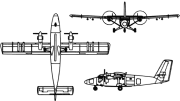|
Yea but the clearance procedures from Los Zetas can be onerous to say the least
|
|
|
|

|
| # ? May 25, 2024 17:49 |
|
CarForumPoster posted:Yea but the clearance procedures from Los Zetas can be onerous to say the least Clearance is a basic formality that is, often, entirely optional. It's the ground staff one should be concerned with.
|
|
|
|

|
|
|
|
Zeppelin Commit I'm finding some visual references for someone, and I just came across this blog. This is a post on the life of a DELAG Zeppelin mechanic. Mechanics for flying naturally came out of the engine maker's factory: quote:New mechanics were typically recruited from the Daimler-Benz motor works in Untert�rkheim (where the LOF-6 was produced) just as the older mechanics who had previously served aboard the Graf Zeppelin had mostly been drawn from the Maybach factory in Friedrichshafen, which had produced the Graf�s VL-2 engines. The idea was to have the ship's engines manned by men who had built them and spent months working on them in the factory. By the time an engine mechanic began serving aboard the Hindenburg, he was intimately familiar with the ship's engines. quote:Engine mechanics stood a two-hour watch during the day, and three at night, and their time on duty was adjusted so that each mechanic would go on watch at the same time every fourth day. In addition, as the Hindenburg passed from one time zone to the next during transatlantic flights, engine mechanic watches would be extended or shortened by half an hour to account for the time difference.  quote:To reach their engine cars, the mechanics would either climb down a ladder to reach the aft cars, or cross a short lateral catwalk to reach the forward cars. Neither was for the faint of heart. Theodor Ritter would later describe his first time traversing the catwalk to his forward portside engine car in broad daylight with the North Atlantic ocean far below. His watch at the beginning of the flight had ended at 11:00 PM the previous evening, and his walk back to the ship�s interior, in the comfort of darkness, had seemed unremarkable. His trek back across to his engine car for his watch the next morning, however, made somewhat more of an impression on him.   quote:Though engine repairs were not uncommon, the engine mechanics often found that entire two-hour watches would pass without so much as a knock to be attended to. At these times, they would take advantage of a special fringe benefit of their engine car duty � one of the best, most expansive and unobstructed views on the entire ship. With an open aft end of the car, a pair of broad clamshell radiator shutters on the forward end that was often thrown wide open, a door-sized access hatch on the inboard side of the car and a porthole on the outboard side, the engine mechanics had their pick of vantage points from which to view the scenery that often slid by only a few hundred feet below. Forests, cities and rivers while over land, sharks and rays sunning themselves beneath the surface of the warm South Atlantic on South American flights, icebergs and even occasionally the aurora borealis while soaring high over the North Atlantic on voyages to the United States� the engine mechanics had no shortage of amazing sights to occupy their time during a particularly quiet watch, and some of them even took photos with small Leica cameras that they could tuck safely away inside their overalls for the wind-swept trek between the ship and the engine car. quote:With each mechanic�s watch lasting two to three hours, depending on the time of day, there wasn�t a lot of time for off-duty socialization. �And so it goes � work, eat, sleep, work,� Theodor Ritter would later write. When one�s engine car watch was over and the mechanic�s relief arrived, he usually lost little time in getting some chow and hitting his bunk for a few hours� sleep. Ritter described this very well in his memoir:   quote:Complete List Of Engine Car Telegraph Settings An example of a repair: quote:During the flight to Rio, the mechanics in all four engine cars had noticed that their motors were burning more and more oil, and that they were throwing bright blue exhaust as well as smoke from the housing vents. During their stopover in Rio, they removed the cylinders from the engines and noted that a significant amount of carbon buildup had caused the piston rings to stick in their grooves, and some had actually seized up. Eat your heart out, airplane pilots: Zeppelins had an post called Trimm wach quote:Trim watch seems to have been something similar to keel watch on the American airships, and was probably concerned largely with the transfer of fuel and water between tanks along the keel, and also out to the gravity tanks that fed the engines. Not only did the engine mechanics on duty need somebody inside the ship to keep fuel and coolant water flowing their way, but the command crew and the Chief Engineer also needed somebody to keep track of the dispersion of the ship's fuel and water supplies along the ship�s keel, so that the ship could more easily be kept in trim and as close to level in the air as possible. Various other crew members, such as the riggers, would sometimes take care of replenishing ballast bags during their standby watch, but it would seem likely that a man would be assigned to oversee the fuel and water tanks and their pumping systems on a regular basis.  "I am a trimm wacher...I am a trimm wacher....every day"
|
|
|
|
That was a cool as hell read. Thanks for posting it.
|
|
|
|
Very cool!
|
|
|
|
https://twitter.com/tootallo_o/status/1516554916692639748?s=21&t=BI5e9yFJeLaGh5OwVxQj9w
|
|
|
|
Not pictured: flight attendant in possession of two (2) beers
|
|
|
|
As much as I like this guys channel, no way in hell is he getting enough crackpots to support 1.5 million. https://www.kickstarter.com/projects/impossibleflight/over-the-edge?ref=discovery&term=flat%20earth
|
|
|
|
Why does he need 1.5 million to fly a plane?
|
|
|
|
https://www.youtube.com/watch?v=bsL63HLH1i0
|
|
|
|
The Red Bull giveth; the Red Bull taketh away.
|
|
|
|
https://twitter.com/motive_future/status/1493316683540348939
|
|
|
|
Reminds me of the Disney Masterpiece "Operation Dumbo Drop".
|
|
|
|
Cockpits! I've always thought cockpits are way cool, especially cold war jet ones. One really great internet thing is the National Museum of the US Air Force (i.e., Dayton) web site (https://www.nationalmuseum.af.mil/Visit/Virtual-Tour/ )where you can look around a poo poo load of cockpits in a 360 degree viewer. Even better, the iPad app Cockpit 360 (https://apps.apple.com/us/app/cockpit360/id688929745), which has a bunch of other airplanes in addition to the NMUSAF collection... and all with an iPad finger-swiping interface. Protip: the default view "panorama" is just the outermost zoom level for quick loading. But if you click on "zoom" then you can... zoom. Here is a selection of screen shots from that, many that show particular functional design elements, and others that are just plain cool. XB-70 copilot's yoke cheat sheet with what fuel tanks are what. Comes important for the copilot to move fuel around as necessary (kind of a big deal with supersonic deltas), who’s also playing flight engineer (there were only 2 crew positions on the prototypes) to keep track. Below and to the right you can see a bunch of fuel tank switches, and also in one of the later pictures, to the left of his yoke as well.  Pilot’s yoke cheat sheet, with climb schedule of speed vs altitude. The trim thumb wheel is a unique design that a few North American airplanes had, which was a solution to the classic problem of trim switches that just moved a motor with an on/off signal, where if it was designed to move it fast, then it moved too much and you keep overshooting the proper setting. But if they make it run slow enough to catch the proper setting without overshooting, then it moves too slow when you just want to get done trimming. So they made a thumb wheel that you could move (electrically) fast or slow, for speed AND accuracy, as needed. Also tape instead of dial flight instruments, which had a bit of a heyday in the 70s’s. Note the upside down airspeed, faster numbers are down. It matches the scheme behind every other flight instrument, which is that you move the nose toward the thing that you want. Works for heading, altitude, vertical speed…. I wish this survived into modern glass cockpit airspeed tapes. (On very few airplanes, I think some Gulfstreams, I think this is true.)  Here you can see the other fuel tank switches I mentioned earlier. And under the yoke, is a control panel for the engine air inlet system, which is a huge deal for high mach number airplanes such as this, the A-12/SR-71, and Concorde. There’s a panoply of ramps, doors, etc. that have to be each moved in response to a variety of factors having to do with the complicated system of shockwaves in the inlets. There were two XB-70’s built, and in the first one (this one) the copilot had to manually control this system via this panel, which was most of his workload while airborne. (You can see the bottom half of this more clearly in the first pic above.) The second one (the one that crashed) had an automatic system for this.  Zoomed out you can see the ejection seat, which when activated would have a front shell (with a window) automatically come down, becoming an enclosed capsule. It could even, in the event of depressurization, “encapsulate” without ejecting, and resume aircraft control via, I think, trim and electronic throttle control from the inside, and be flown down to a lower altitude this way.  B-58 Hustler. Like all supersonic deltas, as the center of pressure moves forward/aft down the wing when crossing Mach 1, the center of gravity needs to move with it, which is accomplished by pumping fuel forward and back through the various tanks. Here, a thumb switch CG FWD/AFT is provided on the stick that functions just like the trim switch familiar to all pilots. Forward-back, gives nose down and nose up. By moving fuel. An awesome show of elegance, of fitting a whole ‘nother function into an already existing control scheme as far as pilot interface and result. Anyway, I think this is only here for backup, because the main fuel control panel (later picture) has what seems to be the normal control.  And here’s that fuel panel, at the pilot’s seat. It’s a great example of something seen in a bunch of places, where the controls and indications are laid out over a system schematic diagram. This switch works the valve or pump that’s here, this gauge shows this tank, this open/close indicators shows this valve, there’s all the plumbing that connects them just so on the fuel’s journey from tanks to engines, etc. If space allows for it, a great mnemonic system to help the operator keep track of what they’re doing to the system, compared to just a row of switches that they have to map inside their head to their location in the schematic, that’s only in their head after being studied in training. Near the top you can see the CG dial, with an indicator and a bug. Probably you use a twisty knob nearby (maybe just out of a view above?) to set the bug, and then the system in “auto” mode just keeps the needle at the bug. Then there’s “manual” with a forward/aft knob right next to it, as well as the thumb switch from last picture.  Just the forward view. I took these screen shots months ago and don’t remember what I was trying to show here, but here it is. Note that the seat is not centered, but a little to the left. Ooh, take a look at “AILERON AVAILABLE,” just to the left of the two leftmost round dials. There was an era in the 60’s where it was common instead of lights to show things, you had these mechanical “talkbacks” that moved in their little window to show either the same color as the rest of the instrument panel (representing nothing being shown, meaning the OK/normal indication,) or as we see here, attention-getting crosshatching “barber pole” meaning it’s wrong, same as what would be a yellow or red light. Since the plane is on the ground and de-powered, the default barber pole indication is shown, same as what would happen in flight if the indicator loses power from the malfunctioning system.  Convair F-106 Delta Dart interceptor, weird U-shaped yoke, probably to make room for the multitude of (radar-related) controls, in an early implementation of the HOTAS (Hands On Throttle And Stick) philosophy, so the multitasking pilot would not need to release the controls to do the common/quick actions needed in an intercept and/or dogfight.  This one’s really neat. Modified Lockheed T-33 trainer, probably modified and operated by Calspan Corporation (spun off of Cornell University) as one of their “flying simulator” series that has normal flight controls in one cockpit, and fly by wire controls in the other cockpit, that are configurable in-flight by a multitude of settings to behave in different ways, for all sorts of research and test pilot education into flight control laws, stability of other airplanes, etc. I think the earliest incarnation of this might have been an A-20 just after WWII, and lives on today in an F-16 (“VISTA”) and a Lear that both live at Edwards/ USAF Test Pilot School. Here this is the back seat where the safety pilot/instructor sits, you can see in the center light grey panel controls to turn various things on/off to manage the test controls in the front seat (basically a FE panel) and in the upper right with all the colored knobs, to dial values into the computer. Lots of greek letters that stability and control eggheads eat and breathe.  More of the same on the right console.  Chinese MiG-15. Has one of the Eastern Bloc varieties of bonkers crazy attitude indicator, for being upside down! Black on top, blue on bottom. No it didn’t tumble over to this orientation after being shut down, this is how it was! I guess the gyro is inside the instrument (as opposed to being in a box somewhere in an avionics bay, and the instrument in front of the pilot being only an indicator, which is the more common arrangement) and holds its position in space, so as the airplane pitches up “around” it, we see more of the bottom (sky, blue) of the instrument exposed, which is good as it correctly shows sky. But it’s upside the gently caress down!  Mig-23, in classic Russian ash blue, with the OTHER type of backwards (to us) attitude indicator. At least it’s not upside down. But what we’re used to, is that as the airplane rolls, the artificial horizon stays parallel to the real horizon, that is, it moves relative to the panel, just as the real horizon does. Which is why it’s called an artificial horizon. On the other hand with THIS thing, the horizon stays still, and the little airplane rolls. So say the real airplane is rolled 20 degrees to the left. The little airplane is rolled 20 degrees to the left relative to the panel, and 40 degrees to the left relative to the real horizon. Neat little space-saving bit in having the vertical speed indicator and turn&bank indicator, being in the same instrument face. Also what’s that vertical white line in the middle of the panel? It’s where to put the stick in case of spin! Oh and wassup with the English labels? This one is in an American museum through being part of the 4477th Test and Evaluation Squadron, aka the CONSTANT PEG program where they flew a bunch of acquired MiGs out of Tonopah not just for engineering exploitation, but actual air combat training against US fighter pilots. Amazing book “Red Eagles” by Steve Davies about it. Failing that, Youtube search “10 percent true constant peg” on his Youtube channel with interviews of pilots from that program.  Space Shuttle trainer. Apollo era knobs and switches galore! And a few talkback indicators that I mentioned before. Overlaid on a system schematic, in this case it looks like the environmental system.  Instrument panel before the glass cockpit conversion. Apollo FDAI and switches, talkback indicators for the landing gear, and Velcro everywhere where they constantly changed out the cue cards (basically, checklists) for the phase of flight as appropriate. The placard below the FDAI reads INVERTED SPINS PROHIBITED BELOW 500’  More switches  B-36 flight engineer panel, with 2(!) seats  Concorde FE panel. Mostly fuel tanks and plumbing, of the (I think) 11 fuel tanks. In the middle of all that (toward the lower right of this picture) is the CG computer control and indicator.  Oh, here it is better. The flight engineer’s CG indicator had a pair of limit bugs that automatically moved, showing at the current Mach number, what is the CG limit to stay within. The pilot’s airspeed indicator showed the inverse: at the current CG, what are the Mach limits (low and high) to stay within. So during acceleration/deceleration, both of them could stay within their gradually moving limits, reaching the final state right and the right time. Timing this just right was like a simultaneous orgasm, and also everyone didn’t die.  Another pic, not from this app, that tries to capture the whole panel  Oh and here’s the pilot’s panel. The little colors on top of the engine gauges show which hydraulic systems they respectively supply, which are named after colors. A scheme that survives to this day in Airbus airplanes, as do some other features of Concorde.  Aero Spacelines Super Guppy, a turboprop-powered descendent of the Boeing 377, which is itself a descendent of the B-29. Essentially B-29 parts are flying today earning their living, a beautiful and stunning fact. Anyway in turboprops it’s common to have different throttle settings for ground idle vs. flight idle, flight idle being slightly higher to ensure more reliable engine running and/or less spool up time from idle to full in case of needing high power suddenly. Sometimes this is set with a separate knob, sometimes it’s the throttle knob itself jumping over a detent either by being lifted up, or pushing a release latch, or something. Well in this installation, apparently it’s little flip tabs that you flip up after the power is up, which then block the throttles from coming back. Also it appears to have the world’s most obnoxious aileron trim, where you have to awkwardly reach over a bunch of poo poo while being sure not to accidentally flip any of the switches in the way.  F-111 earlier version, just pure coolness. Sun shielded radar scope in the right seat, and bombing computer controls below.  F-111 later version, now with some MFD’s and a Cassette Futurism feel. And less peeled paint, etc. You can see a little joystick for the copilot’s right hand to control targeting sensors  Straight ahead view  TBM avenger, the WWII torpedo bomber that George Bush Sr. was shot down in. I can say from personal experience that it feels like the exact type of airplane that the T-6 is a trainer for. System worked as intended! But! This was before the era of standardized schemes, and I chose this view to show the tailwheel locking control, where aft is locked and forward is unlocked… opposite of the T-6. Don’t breeze by your habitual actions too… habitually! 
vessbot fucked around with this message at 07:42 on Apr 27, 2022 |
|
|
|
Zero One posted:https://twitter.com/tootallo_o/status/1516554916692639748?s=21&t=BI5e9yFJeLaGh5OwVxQj9w My wife was on a flight decades ago where the slide deployed during taxiing and she told the crew about it.
|
|
|
|
How bad would it be if the slide on a big jet deployed mid flight?
|
|
|
|
Deptfordx posted:How bad would it be if the slide on a big jet deployed mid flight? Slides are mounted in the door and you can't open the door while pressurized so I'm guessing real, real goddamn bad.
|
|
|
|
vessbot posted:Cockpits!
|
|
|
Beef Of Ages posted:Slides are mounted in the door and you can't open the door while pressurized so I'm guessing real, real goddamn bad. On the 320 family, and probably some other aircraft, some of them are mounted in a small compartment under the aircraft door. While it's theoretically impossible to deploy the slide mid air it would probably just rip itself off the side of the airplane if you somehow managed it. The attachment points for slides are just a few pins that can be pulled to detach them for use as a life raft and the drag from the slide flapping in the airstream would easily snap those pins. It would certainly be a pretty big "What the gently caress was that?" moment for everyone involved though.
|
|
|
|
|
Wonder if it�d get sucked into the engine. I would have thought there would be a barometric interlock on those things though.
|
|
|
|
FrozenVent posted:Wonder if it’d get sucked into the engine. Barometric interlock seems risky given that the plane could crash anywhere from sea level to 29k feet and you'd need to be able to evacuate.
|
|
|
|
I mean, it could crash below sea level too.
|
|
|
|
Lol, but probably not true. Probably more like an F-86 or something like a Bf-109.
|
|
|
|
slidebite posted:As much as I like this guys channel, no way in hell is he getting enough crackpots to support 1.5 million. lol gently caress off kelsey you literally fly 747s halfway around the world when you�re not pissing off scheduling, you don�t need money to do this
|
|
|
|
LMAO it sounds like you've got some info on him. Do you think his employer would give him a pax layout 747 and crew for free or what's your angle? I would be surprised if the cost was anywhere near 1.5Million though, even with the "fees" for a documentary crew.
|
|
|
|
Maybe he's setting at 1.5 million as a joke or something. He doesn't intend to do it, but falt earthers can't say he didn't try.
|
|
|
|
Cojawfee posted:Maybe he's setting at 1.5 million as a joke or something. He doesn't intend to do it, but falt earthers can't say he didn't try. Flat Earthers literally funded a guy making a rocket in his back yard and he managed to launch it and survive (once, not so much the next time). Set the rate high because you'll have in a sealed tube with these dinguses for hours.
|
|
|
|
Aaaaaaarrrrrggggg posted:Flat Earthers literally funded a guy making a rocket in his back yard and he managed to launch it and survive (once, not so much the next time). quote:His post-flat-Earth fundraising campaign made its $7,875 goal.
|
|
|
|
NightGyr posted:Slightly different budget. Yeah, I just remember him getting funded by it, but not the budget. That's, uh... Quite different. Still, grift what you can from 'em.
|
|
|
|
vessbot posted:Cockpits! Awesome post, thanks
|
|
|
|
There was a helicopter crash near me yesterday. Now it turns out that there were two helicopters that crashed in the same place! https://www.wesh.com/article/crews-discover-another-helicopter-lake-apopka/39839800 quote:
|
|
|
|
��.I�d have two nickels. Which isn�t a lot but it�s weird that it happened twice.�
|
|
|
|
In SW Arizona, helicopters fly low over fields at night, unaided except for their searchlight to spray pesticides on the fields. Those guys are insane.
|
|
|
|
slidebite posted:LMAO it sounds like you've got some info on him. What is the cheapest way you could fly his route over the south pole from Argentina to Australia? What's the cheapest legal way you could do it, respecting ETOPS and similar regulations?
|
|
|
|
https://www.youtube.com/watch?v=Du2gGFvbnvk
|
|
|
|
I could almost believe this is in a real Ace Combat.
|
|
|
|
The clipping going through the tunnel killed me. Watching the carrier takeoff and the superstructure fully set my expectations for what was coming next, and I was not disappointed.
|
|
|
|
Sagebrush posted:What is the cheapest way you could fly his route over the south pole from Argentina to Australia? 747s are certified to 330minutes ETOPS, I�m not sure there�s any point on earth a 747 couldn�t fly to. I mean, if ETOPS applied to irregular charters anyway.
|
|
|
|

|
| # ? May 25, 2024 17:49 |
|
Right, but is there anything cheaper than a 747 that you could use for that route? For that matter, is 330 minutes even long enough to cross the south pole? There sure aren't a lot of diversion airports down there. And the Pacific Ocean is really big.
|
|
|

































